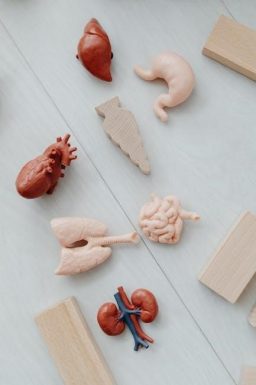This unit explores cell structure and function, introducing key biological concepts. Students learn about cell theory, organelles, and membrane transport, forming a foundation for advanced topics.
1.1 Overview of Cell Structure and Function
Cell structure and function form the foundation of life, with cells as the basic units. The cell membrane, a fluid phospholipid bilayer, regulates transport and maintains internal conditions. Organelles like mitochondria, ribosomes, and the Golgi apparatus perform specialized roles, enabling energy production, protein synthesis, and cellular organization. Understanding these components and their interactions is essential for grasping biological processes.
1.2 Key Concepts and Learning Objectives
This section covers foundational concepts in cell biology, including cell theory, the fluid mosaic model, and types of cellular transport. Students will learn to identify organelles, their functions, and how cells maintain homeostasis. Key objectives include understanding the hierarchy of living systems, the role of membranes, and the importance of organelle interactions in sustaining life.
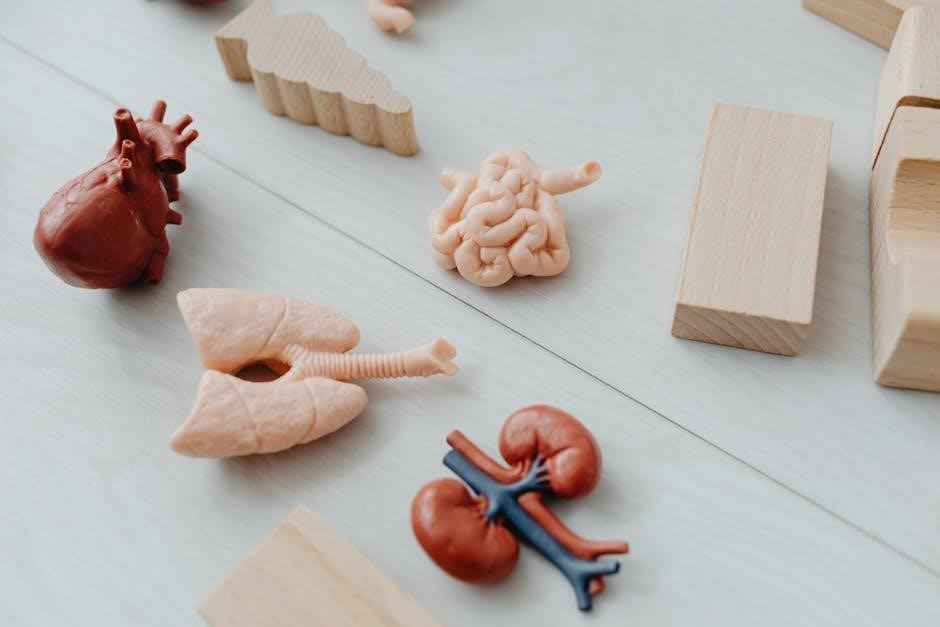
Cell Theory and Discovery
Cell theory, developed by Schleiden, Schwann, and Virchow, states that all life consists of cells. This foundational concept explains cellular structure, function, and reproduction, shaping modern biology.
2.1 Historical Background and Key Contributors
Cell theory emerged in the 19th century through contributions by Matthias Schleiden, Theodor Schwann, and Rudolf Virchow. Schleiden and Schwann proposed that all organisms are composed of cells, while Virchow added that cells arise from pre-existing cells. Their work laid the cornerstone for modern cellular biology, emphasizing the cell as life’s fundamental unit.
2.2 Modern Cell Theory and Its Significance
Modern cell theory states that all living organisms are composed of cells, the basic structural and functional units of life. It unifies biology, emphasizing that cells arise from existing cells and that cellular activity underpins life. This theory’s significance lies in its universal application, guiding advancements in medicine, genetics, and our understanding of life’s complexity.
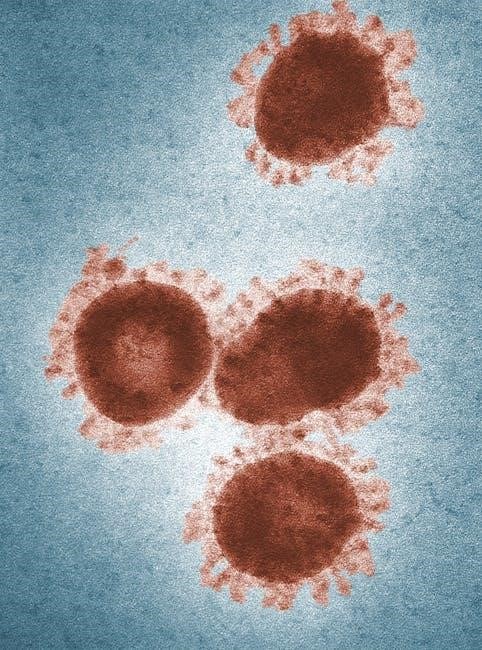
Cell Membrane Structure and Function
The cell membrane is a dynamic structure regulating material transport and signaling, essential for cellular homeostasis and communication. Its fluid mosaic model enables selective permeability, crucial for cell survival.
3.1 Fluid Mosaic Model
The fluid mosaic model describes the cell membrane as a dynamic, fluid phospholipid bilayer with embedded proteins. These proteins perform various functions, including transport and signaling, enabling the membrane to regulate interactions with the cell’s environment while maintaining structural integrity and fluidity.
3.2 Phospholipid Bilayer and Integrated Proteins
The cell membrane consists of a phospholipid bilayer, with hydrophilic heads facing outward and hydrophobic tails inward, creating a stable structure. Integrated proteins, such as transport proteins and receptors, are embedded within this bilayer, facilitating essential cellular functions like nutrient uptake, signaling, and waste removal, while maintaining the membrane’s selective permeability and overall cellular homeostasis.
3.3 Types of Transport Across the Membrane
Transport across the cell membrane occurs via passive and active mechanisms. Passive transport includes diffusion (concentration gradient), osmosis (water movement), and facilitated diffusion (carrier proteins). Active transport requires energy (ATP) to move molecules against gradients. Vesicle transport, such as endocytosis and exocytosis, involves membrane vesicles to transfer large molecules, ensuring efficient exchange of materials essential for cellular function and survival.
Organelles and Their Functions
Organelles are specialized structures within cells, each performing unique roles. Mitochondria produce energy, ribosomes synthesize proteins, and the Golgi apparatus modifies and transports molecules, essential for cellular operations.
4.1 Structure and Function of Major Organelles
The nucleus houses DNA, regulating gene expression. Mitochondria generate ATP through cellular respiration. The endoplasmic reticulum and Golgi apparatus process proteins. Lysosomes contain digestive enzymes, while ribosomes synthesize proteins. Each organelle’s structure correlates with its function, enabling cells to maintain life and respond to environmental changes efficiently.
4.2 Role of the Cytoskeleton in Cell Organization
The cytoskeleton, composed of microtubules, microfilaments, and intermediate filaments, provides structural support and shape to cells. It facilitates movement, organizes organelles, and regulates cell division. Microtubules form pathways for vesicle transport, while microfilaments enable cell signaling and muscle contraction. This dynamic network is essential for maintaining cellular organization and enabling responses to internal and external stimuli.
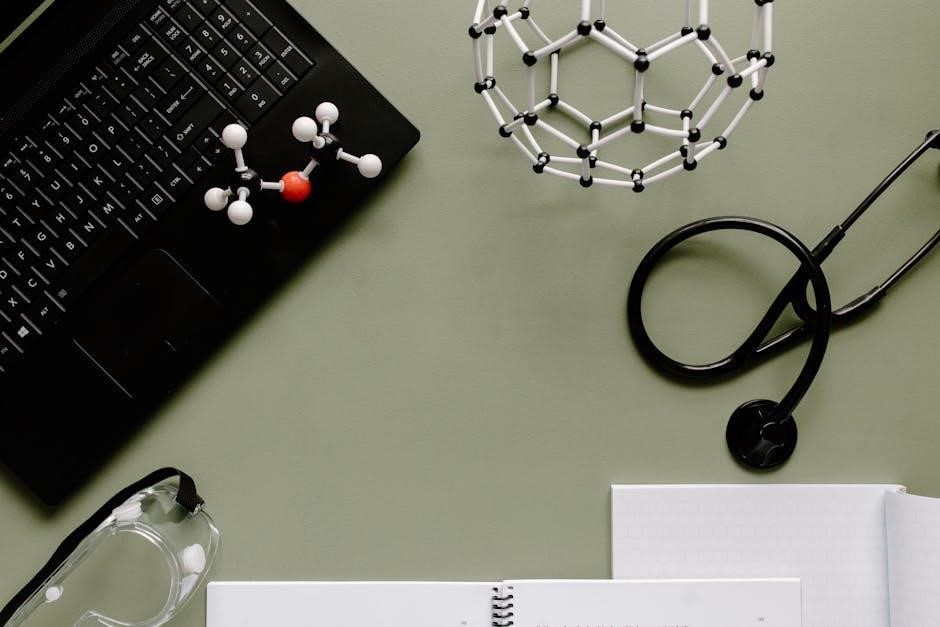
Cell Transport and Communication

Cell transport and communication involve passive and active mechanisms like diffusion, osmosis, and vesicle transport. Cells communicate through signaling molecules, ensuring coordination and responses to environmental changes efficiently.
5.1 Passive vs. Active Transport
Passive transport involves movement of molecules without energy, such as diffusion and osmosis, relying on concentration gradients. Active transport requires energy, moving molecules against gradients using carrier proteins. Both processes are vital for cell survival, enabling nutrient uptake and waste removal efficiently.
5.2 Endocytosis and Exocytosis
Endocytosis involves the cell membrane engulfing materials, such as nutrients or pathogens, forming vesicles for internal processing. Exocytosis is the release of materials, like proteins or waste, through vesicle fusion with the membrane. Both processes regulate cellular transport, maintaining homeostasis and enabling communication with the environment, utilizing energy for precise molecular delivery and uptake.

Cell Division and the Cell Cycle
The cell cycle regulates growth, DNA replication, and cell division. It includes phases like interphase, mitosis, and cytokinesis, ensuring genetic continuity and cellular reproduction in eukaryotic organisms.
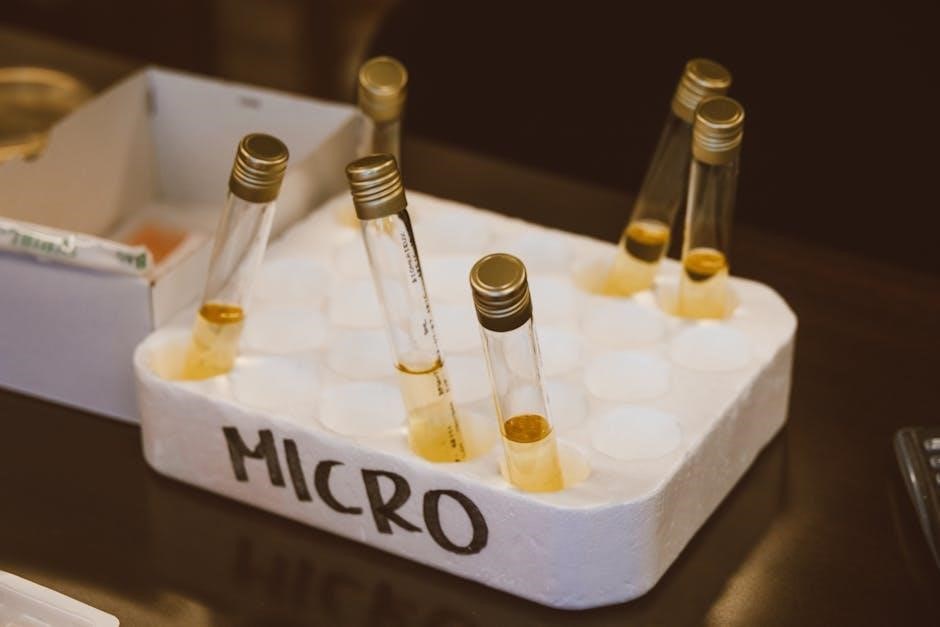
6.1 Mitosis vs. Meiosis
Mitosis and meiosis are fundamental processes in cell division. Mitosis involves one division cycle, producing two genetically identical diploid daughter cells, crucial for growth and repair. In contrast, meiosis undergoes two divisions, resulting in four genetically diverse haploid cells, essential for sexual reproduction. These processes differ in cell number, genetic variation, and function within organisms.
6.2 Stages of the Cell Cycle
The cell cycle consists of four stages: G1, S, G2, and M. G1 is the growth phase, S is for DNA replication, G2 prepares for division, and M includes mitosis and cytokinesis. Checkpoints regulate progression to ensure proper conditions. Understanding these stages is crucial for grasping cell division and its role in growth, repair, and reproduction in organisms.
Endosymbiotic Theory
Explains the origin of eukaryotic cells through engulfment of prokaryotes, leading to organelles like mitochondria and chloroplasts, supporting evolutionary relationships between organisms and their cellular structures.
7.1 Origin of Eukaryotic Cells
Eukaryotic cells originated through endosymbiotic relationships, where prokaryotes were engulfed by larger cells, evolving into organelles like mitochondria and chloroplasts. This mutualistic interaction enabled complex cellular functions, supporting the development of multicellular organisms and higher life forms by organizing cells into tissues and organs, forming a hierarchical structure essential for advanced biological systems.
7.2 Evidence Supporting the Theory
The endosymbiotic theory is supported by evidence such as mitochondria and chloroplasts having their own DNA, resembling prokaryotic cells. Their double membranes and ability to reproduce independently further suggest an endosymbiotic origin. Additionally, organelles like ribosomes inside these structures align with prokaryotic features, strengthening the theory that eukaryotic cells evolved from symbiotic relationships between ancient prokaryotes.

Comparison of Plant and Animal Cells
Plant cells have cell walls, chloroplasts, and a large vacuole, while animal cells lack these features but may contain centrioles. These differences reflect distinct functions and structures.
8.1 Cellular Characteristics
Plant cells are distinguished by their rigid cell walls, chloroplasts for photosynthesis, and large central vacuoles. Animal cells lack these features but often contain centrioles for cell division. These differences reflect specialized functions, with plant cells optimized for structural support and photosynthesis, while animal cells emphasize mobility and rapid signaling. Understanding these distinctions is critical for comparing cellular biology processes.
8.2 Responses to Environmental Changes
Plant cells respond to environmental changes through tropisms and turgor pressure, while animal cells adapt via signaling pathways and membrane flexibility. Plants adjust growth direction in response to stimuli like light, whereas animal cells rely on receptor-mediated responses. These mechanisms ensure survival by maintaining homeostasis and enabling adaptation to external conditions, highlighting divergent strategies in cellular responses.
Laboratory Investigations
Laboratory investigations focus on membrane permeability and cell structure analysis. Experiments involving dialysis bags explore molecular movement across membranes, while microscopy provides insights into cellular organization and organelle functions.
9.1 Membrane Permeability and Dialysis
Laboratory investigations on membrane permeability often involve dialysis experiments. A dialysis bag filled with starch and glucose is submerged in water to observe molecular movement. Over time, glucose diffuses out, while starch remains trapped, demonstrating selective permeability. This setup mimics cell membrane behavior, helping students understand how size and concentration gradients influence transport across biological membranes.
9.2 Microscopy and Cell Structure Analysis
Microscopy is essential for studying cell structure. Light microscopes reveal organelles like the nucleus and mitochondria, while electron microscopes provide higher resolution. Students prepare slides, stain cells, and observe structures like cell walls in plants and organelles in animal cells. Lab activities include comparing plant and animal cells, analyzing membrane details, and documenting observations to understand cellular organization and function.
Study Tips and Strategies
Effective note-taking and practice questions are crucial. Use flashcards for key terms, join study groups, and review labs regularly to master concepts and improve retention.
10.1 Effective Note-Taking Techniques
Use bullet points to organize key concepts. Highlight definitions and processes, and draw diagrams for complex structures like cells and organelles. Summarize each topic in your own words after class. Review notes weekly and use flashcards for terminology. Mnemonics can help remember sequences like the stages of mitosis or transport types. Consistency and clarity are essential for effective learning and retention.
10.2 Practice Questions and Review Resources
Utilize online platforms offering practice questions tailored to Unit 2. Review past AP Biology exams for similar topics. Study guides and flashcards can reinforce concepts like cell structure and transport. Engage with interactive simulations to visualize processes. Regularly test your knowledge with timed quizzes to assess understanding and identify weak areas for focused study.
Sample Multiple-Choice Questions
This section provides sample multiple-choice questions mirroring the AP exam format. These questions assess understanding of cell structure, function, and related biological processes, ensuring comprehensive preparation.
11.1 Test-Taking Strategies
Effective test-taking strategies for AP Biology Unit 2 involve skimming questions first, eliminating incorrect answers, and managing time wisely; Focus on understanding key concepts like cell structure and transport mechanisms. Use process of elimination for ambiguous questions and review answers if time permits. Practicing with sample questions enhances familiarity with the exam format and improves confidence. Stay calm and systematic to maximize scores.
11.2 Common Exam Topics and Patterns
Common exam topics include cell structure, membrane transport, and organelle functions. Emphasis is placed on concepts like endosymbiotic theory, cell division, and comparing plant vs. animal cells. Students should focus on understanding key biological processes and their applications. Practice questions often test knowledge of cell theory and laboratory investigations, such as membrane permeability. Regular review of these areas ensures thorough preparation for the exam.
